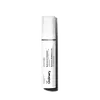What's inside
What's inside
 Key Ingredients
Key Ingredients

 Benefits
Benefits

 Concerns
Concerns

 Ingredients Side-by-side
Ingredients Side-by-side

Water
Skin ConditioningGlycereth-7 Triacetate
EmollientGlycerin
HumectantCarthamus Tinctorius Oleosomes
EmollientIsopentyldiol
HumectantPolyglyceryl-10 Behenate/Eicosadioate
EmulsifyingButylene Glycol
HumectantPyrus Malus Fruit Extract
Skin ConditioningPolysorbate 20
EmulsifyingRetinol
Skin ConditioningGlycyrrhiza Glabra Root Extract
BleachingCeramide NP
Skin ConditioningPalmitoyl Tripeptide-1
Skin ConditioningAvena Sativa Kernel Extract
AbrasiveEpilobium Angustifolium Flower/Leaf/Stem Extract
Skin ConditioningArctium Lappa Root Extract
Skin ConditioningSalix Alba Bark Extract
AstringentAllantoin
Skin ConditioningDipotassium Glycyrrhizate
HumectantCaprylyl Glycol
EmollientPolyglyceryl-10 Laurate
Skin ConditioningDipentaerythrityl Tri-Polyhydroxystearate
EmollientEthylhexyl Methoxycrylene
Skin ConditioningHydrogenated Lecithin
EmulsifyingBis-Glyceryl Ascorbate
AntioxidantDisodium EDTA
Sorbic Acid
PreservativeXanthan Gum
EmulsifyingPhenoxyethanol
PreservativeWater, Glycereth-7 Triacetate, Glycerin, Carthamus Tinctorius Oleosomes, Isopentyldiol, Polyglyceryl-10 Behenate/Eicosadioate, Butylene Glycol, Pyrus Malus Fruit Extract, Polysorbate 20, Retinol, Glycyrrhiza Glabra Root Extract, Ceramide NP, Palmitoyl Tripeptide-1, Avena Sativa Kernel Extract, Epilobium Angustifolium Flower/Leaf/Stem Extract, Arctium Lappa Root Extract, Salix Alba Bark Extract, Allantoin, Dipotassium Glycyrrhizate, Caprylyl Glycol, Polyglyceryl-10 Laurate, Dipentaerythrityl Tri-Polyhydroxystearate, Ethylhexyl Methoxycrylene, Hydrogenated Lecithin, Bis-Glyceryl Ascorbate, Disodium EDTA, Sorbic Acid, Xanthan Gum, Phenoxyethanol
Water
Skin ConditioningCoco-Caprylate/Caprate
EmollientPropanediol
SolventPentylene Glycol
Skin ConditioningHydroxyapatite
AbrasiveRetinal
Skin ConditioningCetylhydroxyproline Palmitamide
Skin Conditioning4-T-Butylcyclohexanol
MaskingHydroxyphenyl Propamidobenzoic Acid
Skin ConditioningErgothioneine
AntioxidantBiosaccharide Gum-1
HumectantBisabolol
MaskingBrassica Campestris Sterols
EmollientZingiber Officinale Root Extract
MaskingButylene Glycol
HumectantIsohexadecane
EmollientHexyldecanol
EmollientMaltodextrin
AbsorbentCaesalpinia Spinosa Gum
Skin ConditioningPolyacrylate Crosspolymer-6
Emulsion StabilisingHydroxyethyl Acrylate/Sodium Acryloyldimethyl Taurate Copolymer
Emulsion StabilisingStearic Acid
CleansingIsoceteth-20
EmulsifyingPolysorbate 60
EmulsifyingAscorbyl Palmitate
AntioxidantTocopherol
AntioxidantLactic Acid
BufferingSodium Lactate
BufferingSodium Hydroxide
BufferingEthylhexylglycerin
Skin ConditioningPhenoxyethanol
PreservativeChlorphenesin
AntimicrobialWater, Coco-Caprylate/Caprate, Propanediol, Pentylene Glycol, Hydroxyapatite, Retinal, Cetylhydroxyproline Palmitamide, 4-T-Butylcyclohexanol, Hydroxyphenyl Propamidobenzoic Acid, Ergothioneine, Biosaccharide Gum-1, Bisabolol, Brassica Campestris Sterols, Zingiber Officinale Root Extract, Butylene Glycol, Isohexadecane, Hexyldecanol, Maltodextrin, Caesalpinia Spinosa Gum, Polyacrylate Crosspolymer-6, Hydroxyethyl Acrylate/Sodium Acryloyldimethyl Taurate Copolymer, Stearic Acid, Isoceteth-20, Polysorbate 60, Ascorbyl Palmitate, Tocopherol, Lactic Acid, Sodium Lactate, Sodium Hydroxide, Ethylhexylglycerin, Phenoxyethanol, Chlorphenesin
 Reviews
Reviews

Alternatives
Ingredients Explained
These ingredients are found in both products.
Ingredients higher up in an ingredient list are typically present in a larger amount.
Butylene Glycol (or BG) is used within cosmetic products for a few different reasons:
Overall, Butylene Glycol is a safe and well-rounded ingredient that works well with other ingredients.
Though this ingredient works well with most skin types, some people with sensitive skin may experience a reaction such as allergic rashes, closed comedones, or itchiness.
Learn more about Butylene GlycolPhenoxyethanol is a preservative that has germicide, antimicrobial, and aromatic properties. Studies show that phenoxyethanol can prevent microbial growth. By itself, it has a scent that is similar to that of a rose.
It's often used in formulations along with Caprylyl Glycol to preserve the shelf life of products.
Water. It's the most common cosmetic ingredient of all. You'll usually see it at the top of ingredient lists, meaning that it makes up the largest part of the product.
So why is it so popular? Water most often acts as a solvent - this means that it helps dissolve other ingredients into the formulation.
You'll also recognize water as that liquid we all need to stay alive. If you see this, drink a glass of water. Stay hydrated!
Learn more about Water